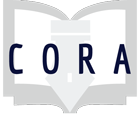This is a lateral reading 75 minute long lesson plan and worksheet assignment that introduces online source evaluation to undergraduate students, preferably first years. Lateral reading involves researching the content of a source as one reads it and this technique is popular with online fact checkers and journalists. The lesson plan calls for instructors to demonstrate lateral reading live (or via recording if asynchronous) using resources found on Google.
Assignments
This is session 1 of 3 sessions that I do for Introduction to Evidence Based Medicine in Pharmacy. For this session I had about an hour so the majority of the session is group work. Included are the materials to build the activity, an overview of the lesson (since so much was group work, I wouldn't call it a lesson plan), and the rubric for assessing /grading the activity. This was designed for Zoom/online synchronous teaching. A guide was created to assist with the work in the class (with links to all class activities) and be a place for students to refer back to later.
This lesson is intended as a one hour, single-session overview of one aspect of information literacy: evaluating the trustworthiness of resources, particularly online. The lesson is designed for a group of 10-25 adults in a public or academic library, or is also suitable for high school students. Instructor will teach students how to investigate a source and apply three small but powerful information literacy tools to evaluation: SIFT, PIE, and SMELL.
Background information, assignment, and reflection on analyzing popular information.
Background information, assignment, and reflection on analyzing information received from the news.
This video was put together to offer health sciences students a brief introduction to critically thinking about their resources in order to evaluate how appropriate they are for use in their work. It was important that the learners understand the complexities of using specific resources and why it is important to always critically evaluate materials. This includes a discussion of critiques of gatekeeping surrounding peer review, how damaging and discriminatory research can still get published, and how to ask crucial questions to subvert dominant narratives.
The Penn State Berks Privacy Workshop Series focuses on privacy issues for students in the past, present, and future. The Privacy Workshop spotlights privacy practices and concerns in the current moment; Digital Leadership explores future implications of past and current digital behaviors; Digital Shred provides tools to e
This assessment asks undergraduate engineering students to review, rate, and explain their decisions relating to the credibility of information resources and information containers. Students are asked to review various resources as well as containers. After reviewing, students assign each resource or container with one of three ratings: green (always credible), yellow (potentially credible with further investigation), or red (never credible). Last, students explain their decision in relation to each resource or container.
Developed in order to move students away from an outdated checklist approach to evaluating online content, we developed this tutorial to teach students how to read laterally and think critically. This tutorial consists of several small chunks of microlearning activities including an assignment. Students can complete as much or as little as they feel they need.
The assignment has students search the same topic in Google and the Web of Science or BIOSIS database. They are asked to pick one result from each search, identify its components (title, author, year) and identify the container of the information (journal, book, news, etc.). They are then asked to compare and reflect on the different results.
